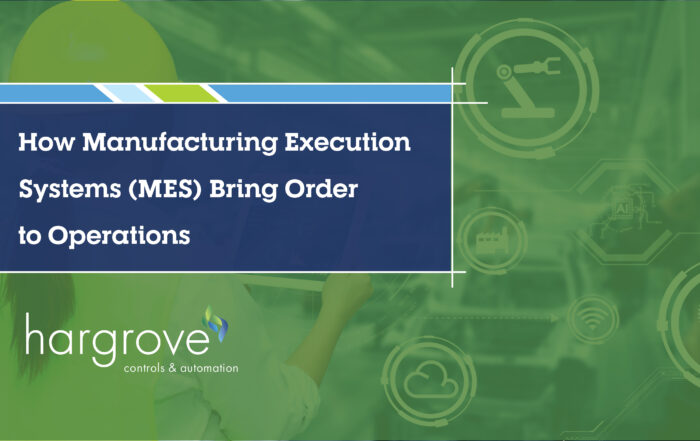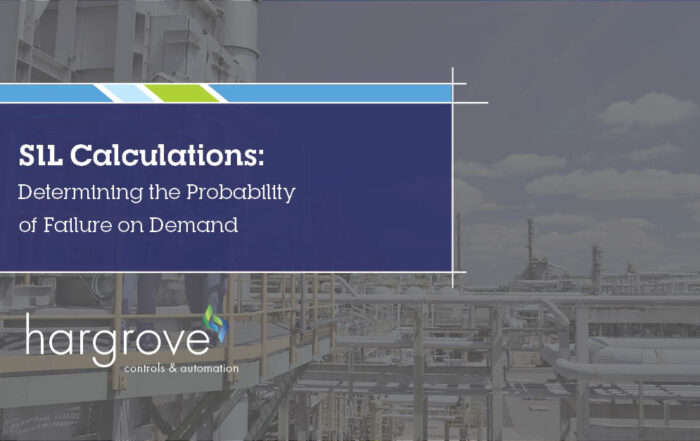Emerging Automation Technology in the First Biodegradable Plastics Plant
CASE STUDY
A bioplastics company contracted Hargrove Controls & Automation to retrofit a brownfield plant to make polyhydroxyalkanoate (PHA)-based resins, adapting existing on-site batch controls.
OBJECTIVE: The bioplastics company needed to upscale their R&D lab process by converting a recently purchased 88,000-sq-ft brownfield plant into a production-scale, manufacturing plant for PHA.
CHALLENGE: As the first operating facility for this product with no full-scale pilot, information did not exist on how to turn this laboratory hypothesis into a manufacturable process and how to increase capacity on a system that was in an unknown state. In addition, the project needed to meet the budget demands of a startup technology company.
SOLUTION: Inventing a New Process
The design integrated biotech, pharmaceutical, and life science technologies with the heavily batch-oriented processes of a chemical plant. The existing facility had a batch control system, which was reused and expanded for the new application.
The phase 1 retrofit total investment cost (TIC) was $55 million, for a total project TIC of $175 million. The automation scope had more than 24,000 human-hours and over 4,000 input/output (I/O) points. It also included narratives and specifications, multiple complex batch operations developed for upstream and downstream processes, tying new equipment into the existing facility, skid package interfacing, wireless network development, historian, site support, commissioning, and operator training.
The facility is controlled by an S88 batch compliant distributed control system (DCS) upgraded to the latest operating system and includes a rebuilt human-machine interface (HMI). There is a plant-wide data historian which gathers information from the DCS. There are nearly a dozen third-party skids integrated together into the DCS, which was a significant part of the effort. Many of the skids are on the finishing unit, which takes the output of the clarifiers and sends it to the centrifuge, dryer, and pelletizer.
Because of increased customer demand, the bioplastics company decided to expand the new facility by tripling the capacity. In order to maximize yield and production, improvements to the design were continuously made from feasibility through commissioning. Pandemic-altered equipment lead times also resulted in modified designs to address equipment availability. This manual optimization process required a great deal of care to be taken when designing the batch logic to ensure that it was flexible enough to handle the continuous improvements.

Results: World’s First PHA Plant
The bioplastics company was able to turn their R&D process from a laboratory environment into production scale while maintaining safety and quality standards and adhering to schedule-driven constraints. By using emerging automation technology and developing control schemes, this bioplastics company invented a reliable new process for the world’s first PHA plant.
Stay Informed
Read from our blog featuring Hargrove Teammates
Reliability, Availability and Maintainability (RAM) Modeling: A Proactive Approach to System Performance
By Matthew Buker, Controls & Automation Digitalization Specialist Weather forecasting uses quantitative data to predict future weather conditions, allowing the public [...]
How Manufacturing Execution Systems (MES) Bring Order to Operations
By Heath Stephens, PE – Digitalization Leader A specialty chemical manufacturing facility relied on paper records to track operations, creating delays [...]
SIL Calculations: Determining the Probability of Failure on Demand
by Chet S. Barton, P.E., FS Exp (TÜV Rheinland) There is inherent risk in industries that handle hazardous materials or processes [...]
Other Areas of Service

Subscribe to Our Newsletter
Stay up to date on the latest Hargrove News & Insights.
CONTACT US
Let’s Make your Facility Safer.
With Hargrove, you get the right experience from the right people in system integration working alongside you to meet and exceed your expectations. Working together as one team – that’s Hargrove.





